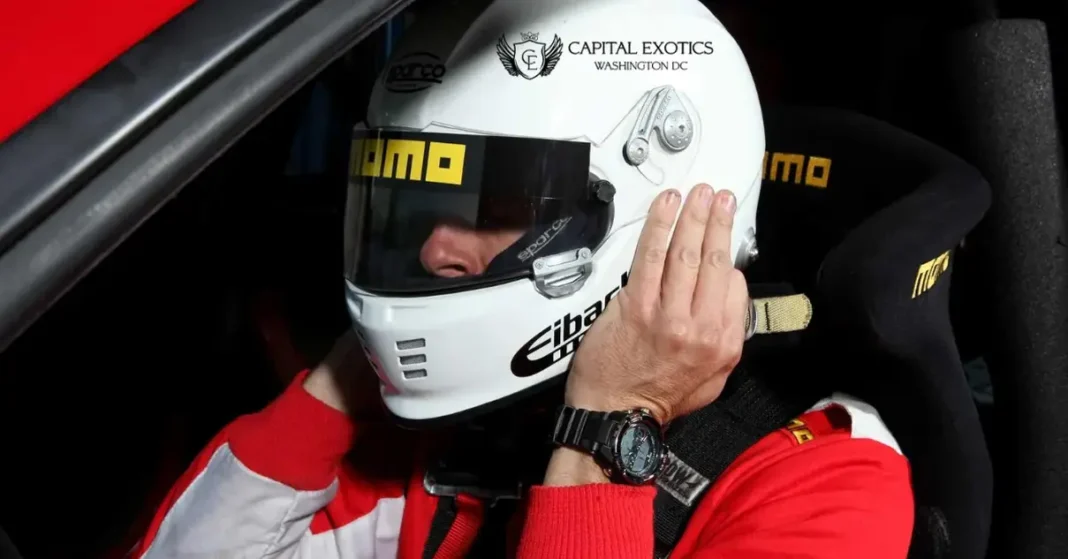Introduction
Participating in car racing requires specialized equipment and preparation to ensure safety, optimal performance, and compliance with track regulations. Whether you’re a seasoned racer or entering your first race, understanding essential gear and requirements is vital for a successful race day experience.
In this guide, we cover all essential car racing equipment and key requirements to help you prepare for the track confidently.
1. Essential Safety Equipment for Drivers
Safety is a top priority in motorsport. Here is the essential safety gear you must have for race day:
Helmet
- Requirement: Full-face helmet approved by FIA, Snell, or SFI standards.
- Key Features: Fire-resistant lining, proper ventilation, visor with anti-fog coating.
- Recommendation: Choose helmets with a Snell SA2020 rating or newer.
Racing Suit
- Requirement: Flame-resistant racing suit certified by FIA or SFI standards.
- Key Features: Multi-layer fire protection, lightweight material, snug yet comfortable fit.
- Recommendation: SFI 3.2A/5 or FIA 8856-2018 certified suits offer reliable protection.
Racing Gloves
- Requirement: FIA or SFI-rated gloves made from flame-resistant materials.
- Key Features: Reinforced palm grip, fire-resistant lining, optimal dexterity.
- Recommendation: Gloves should fit securely for precise steering wheel grip.
Racing Shoes
- Requirement: Flame-resistant shoes designed specifically for motorsport use.
- Key Features: Thin sole for pedal sensitivity, secure ankle support, fire-resistant construction.
- Recommendation: FIA or SFI certified shoes with slip-resistant soles for optimal performance.
Head and Neck Restraint (HANS) Device
- Requirement: Mandatory in most racing series to prevent head and neck injuries.
- Key Features: Compatible with helmet anchors, lightweight carbon-fiber construction.
- Recommendation: Ensure device compatibility with your helmet and racing harness.
2. Vehicle Safety Equipment
Your car must meet specific safety standards to compete. Below are essential vehicle safety items required for race day:
Racing Harness (Seatbelts)
- Requirement: Five- or six-point harness system approved by FIA or SFI standards.
- Key Features: Secure latch system, adjustable belts, quick-release buckle.
- Recommendation: Harnesses must be within expiration dates and properly mounted to the car’s roll cage or frame.
Roll Cage or Roll Bar
- Requirement: Mandatory in most competitive racing classes.
- Key Features: Welded or bolt-in steel tubing, designed to absorb impacts and protect occupants.
- Recommendation: FIA-certified cages are preferred; must pass technical inspections.
Fire Suppression System
- Requirement: In-car fire extinguisher or automatic suppression system required by most racing organizations.
- Key Features: Mounted within driver’s reach, ABC-rated extinguishing agent.
- Recommendation: FIA or SFI-certified automatic systems are highly recommended for higher-level racing.
Racing Seats
- Requirement: FIA-approved racing seats with proper bolstering and head restraint.
- Key Features: Lightweight, impact-absorbing materials, compatible with harness systems.
- Recommendation: Seats must be securely mounted, and FIA certification must be within valid date range.
Battery Disconnect Switch
- Requirement: Clearly labeled external kill switch accessible to emergency personnel.
- Key Features: Instantly shuts off electrical power to prevent fire hazards.
- Recommendation: Positioned visibly, typically on the outside rear of the car, with clearly marked labels.
3. Car Preparation Essentials
Proper vehicle preparation ensures performance, reliability, and compliance with race regulations.
Tires
- Requirement: Approved racing tires (slicks or semi-slicks), depending on racing class.
- Key Features: Optimal grip, correct sizing, minimal wear.
- Recommendation: Always inspect tires before racing; monitor tire pressures and temperatures throughout the day.
Brake System
- Requirement: High-performance brake pads, rotors, and fluid suitable for track conditions.
- Key Features: Consistent stopping power, heat resistance, durable brake fluid.
- Recommendation: Use racing brake fluid with a high boiling point; inspect pads regularly.
Suspension and Alignment
- Requirement: Proper alignment and suspension tuning for optimal track performance.
- Key Features: Adjustable components for camber, toe, caster; reinforced suspension parts.
- Recommendation: Professional alignment and suspension setup prior to race day for peak handling.
Fluids and Lubricants
- Requirement: High-quality synthetic racing oil, transmission fluid, and coolant approved for high-performance use.
- Key Features: High thermal stability, optimal viscosity, and protection against extreme temperatures.
- Recommendation: Replace fluids before racing to ensure engine and transmission reliability.
4. Essential Tools and Pit Equipment
Proper tools and equipment ensure quick repairs and adjustments between sessions:
Basic Tool Kit
- Wrenches, sockets, screwdrivers, pliers
- Torque wrench for critical bolt tightening
- Tire pressure gauge, tire inflator, and tire temperature pyrometer
Jack and Stands
- Low-profile hydraulic racing jack for quick lifting
- High-quality jack stands for secure support
Fuel and Fluid Containers
- Approved racing fuel containers with secure lids
- Containers for engine oil, coolant, brake fluid, and gear oil
Fire Extinguisher for Pit Area
- ABC-rated extinguisher within easy reach in pit and paddock area
Safety Gear for Pit Crew
- Flame-resistant suits, gloves, and eye protection for pit crew members
- Clearly labeled pit area for quick identification and safety
5. Regulatory and Documentation Requirements
Each racing event or sanctioning body has specific documentation requirements:
Racing License
- Issued by sanctioning organizations (e.g., SCCA, NASA, FIA)
- Must be current and presented during race registration
Vehicle Logbook
- Documentation of vehicle history, safety inspections, and modifications
- Required by most sanctioning bodies for competition approval
Technical Inspection (Tech Inspection)
- Mandatory pre-race inspection to confirm compliance with rules
- Covers safety gear, vehicle condition, roll cage construction, and overall compliance with regulations
6. Additional Recommendations for a Successful Race Day
- Arrive Early: Allow ample time for tech inspections, setup, and briefings.
- Stay Hydrated and Energized: Bring water and nutritious snacks to maintain focus.
- Review Rules and Regulations: Understand specific event rules and requirements before race day.
- Prepare Mentally and Physically: Get adequate rest and maintain focus throughout the event.
Conclusion
Properly equipping yourself and your vehicle is critical for a successful and safe race day. Ensuring compliance with safety requirements, having the right gear, and thoroughly preparing your car helps maximize performance and enjoyment at the track.
For more expert advice on racing equipment, automotive guides, and track day insights, visit CarVata, your trusted resource for motorsport knowledge.
